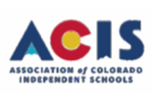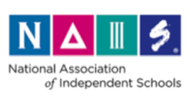Today was filled with interesting and exciting moments of learning. We toured the 50th Space Wing at Schriever Air Force Base. In the morning we were in a class taught by various airmen and officers that explained the importance of satellites and other space technology. Col. DeAnna Burt, Commander of the 50th Space Wing, stopped in to say hello to us and commend us on our math skills as we worked through a team challenge related to the Global Positioning System (GPS). We ate lunch in the air force mess hall; this time gave us the opportunity to mingle with air force members and ask them questions related to career and college paths and space engineering. After lunch, we participated in a series of 45-minute simulation tours that allowed us to better understand the technologies used in space exploration and the physical layout of Schriever AFB. Our first simulation was a computer program that airmen use to practice the commands and procedures for electronically communicating with satellites. Next, we toured 21 SOPs, the 21st Space Operations Squadron, where all satellite communications are centrally organized and scheduled . We learned that this unit still uses computer software and hardware from the 1980s and that each and every communication contact is designated by a distinct bar design in the schedule. Finally, we went to the GPS unit were we learned about the daily proceedings of the ground operators who monitor this multi-billion dollar endeavor. Overall, it was a fun day that was packed with experiences that could only be made possible by the ECS program and networking assistance from CSS parents. After our day at Schriever, we returned to school to put the finishing touches on our high altitude balloon payloads. - Clay R. ‘20
 The next day we started with three student presentations related to the Historic Space Mission project, one of the academic components that we are being graded on as part of this ECS. Today’s presentations were all related to historical space launch missions that played a role in keeping the earth safe from solar activity or accomplished feats that had never before been done in our solar system.
The next day we started with three student presentations related to the Historic Space Mission project, one of the academic components that we are being graded on as part of this ECS. Today’s presentations were all related to historical space launch missions that played a role in keeping the earth safe from solar activity or accomplished feats that had never before been done in our solar system.
We then had the wonderful opportunity to take a trip to Aerospace Corporation (Thank you to Mr. David Richardi, P’18 and P’21, for organizing) and learned the importance of tracking satellites and informing customers when their multi-billion dollar satellite will blow up into thousands of little pieces and become space debris.
 After launching and retrieving our payloads from the high altitude balloon last Saturday, all of our preliminary worries about our engineering and construction have subsided, since our experiments successfully survived their 96,000-foot flight and landed intact. One of the highlights of today’s work was discovering if we realistically have any future in an engineering field for high altitude balloon payloads. We learned this about ourselves as we started to look at our videos, data points, and how well our electronics regulated temperature during flight. We will continue our payload analysis over the next several days. - Joe L. ‘18, Matthew P. ‘20
After launching and retrieving our payloads from the high altitude balloon last Saturday, all of our preliminary worries about our engineering and construction have subsided, since our experiments successfully survived their 96,000-foot flight and landed intact. One of the highlights of today’s work was discovering if we realistically have any future in an engineering field for high altitude balloon payloads. We learned this about ourselves as we started to look at our videos, data points, and how well our electronics regulated temperature during flight. We will continue our payload analysis over the next several days. - Joe L. ‘18, Matthew P. ‘20
This morning we started the day by working on our Team America Rocketry Challenge project, edit 3. Then we began to work on our High Altitude Balloon reports. After that we ate lunch and began our busy time working with Elias Molen at the Space Foundation. We first worked on a computer program that showed us simulations and other valuable things that involved satellites. Then we met two former Air Force workers that talked to us about both work in the air and on the ground. From this we learned a lot about what it is truly like to work in these people’s day to day jobs. During this time we accomplished the abilities to work on a computer program that allowed us to look at satellites and many other space objects. The highlight of our day was definitely when we visited the Space Foundation and were able to talk to Air Force workers and learn about the true facts of what can happen in real life. - Kyle T. ‘20
 On this day of the Space Exploration ECS the students focused mostly on reports and other end of ECS projects. Due to our field trip to the Missile Defense Agency being cancelled, as well as a high fire danger warning in the Colorado area further postponing our third TARC rocket launch, we took the time to finish our HAB (high altitude balloon) reports and historic space mission presentations! Today’s presentation themes were space mission disasters. We had the opportunity to hear from Kyle and the Columbia disaster that suspended NASA missions for almost 2 years and took the lives of seven astronauts. Justin and the famous Challenger disaster bringing it to the end of its 10th mission in 1986. The Soviet’s Soyuz T-10-1 disaster by Miles, and “NASA’s finest hour” during the Apollo 13 manned mission to the moon saving the lives of 3 astronauts. All of the students continued to work diligently on their group projects, and had the opportunity to learn more about these historic space missions that helped shape the future of space travel.
On this day of the Space Exploration ECS the students focused mostly on reports and other end of ECS projects. Due to our field trip to the Missile Defense Agency being cancelled, as well as a high fire danger warning in the Colorado area further postponing our third TARC rocket launch, we took the time to finish our HAB (high altitude balloon) reports and historic space mission presentations! Today’s presentation themes were space mission disasters. We had the opportunity to hear from Kyle and the Columbia disaster that suspended NASA missions for almost 2 years and took the lives of seven astronauts. Justin and the famous Challenger disaster bringing it to the end of its 10th mission in 1986. The Soviet’s Soyuz T-10-1 disaster by Miles, and “NASA’s finest hour” during the Apollo 13 manned mission to the moon saving the lives of 3 astronauts. All of the students continued to work diligently on their group projects, and had the opportunity to learn more about these historic space missions that helped shape the future of space travel.
Tomorrow we will take a highly anticipated full day field trip to Lockheed Martin in Littleton, CO. -Moises B. ‘18 and Miles G. ‘19
Follow all the student ECS Blogs on Campus News!





